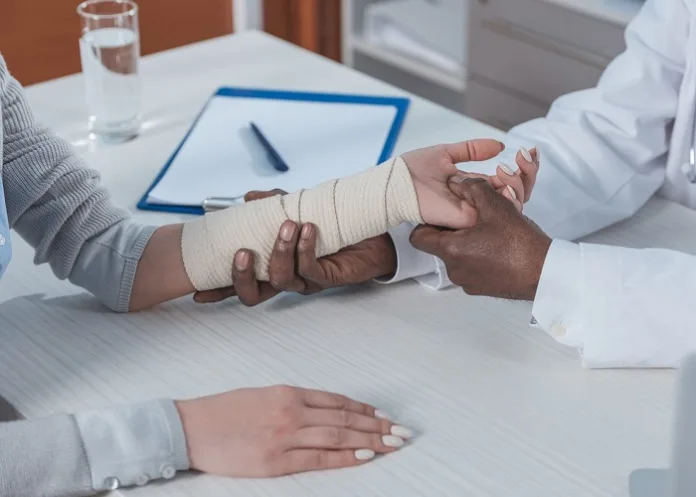Not every wound can be closed with sutures, and a team of Swiss researchers, which developed a soldering process with nanoparticles that gently fuses tissue, has now applied for a patent for the method they say will prevent wound-healing disorders and life-threatening conditions.
The team comprises scientists from the Swiss Federal Laboratories for Materials Science and Technology (Empa) and the federal technology institute ETH Zurich.
More than 5 000 years ago, humankind came up with the idea of suturing a wound with a needle and thread. Since then, this surgical principle has not changed much: depending on the fingertip feeling of the person performing the operation and the equipment, cuts or tears in the tissue can be joined together more or less perfectly.
Once both sides of a wound are neatly fixed to each other, the body can begin to close the tissue gap permanently in a natural way.
However, the suture does not always achieve what it is supposed to. In very soft tissues, the thread can cut through the tissue and cause additional injury.
And if the wound closure does not seal on internal organs, permeable sutures can pose a life-threatening problem.
Soldering wounds using lasers
In principle, said the Swiss team, soldering wounds using the new method works in the same way as soldering two metals: a solder is required that melts at a low temperature and can be used to bond the two parts together.
In the case of metals, a metal mixture with copper is usually used. In this case, the researchers developed a protein gelatine paste that serves as a solder for soldering fabrics.
The paste contains two types of nanoparticles: first, so-called titanium nitride nanoparticles, which convert light into heat – when the paste is irradiated with a laser, it heats up.
Second, bismuth vanadate particles, which act as a kind of thermometer. According to Empa, they emit light of a specific wavelength depending on the temperature and thus enable precise temperature control in real time.
In laboratory tests with various tissue samples, for example, on organs such as the pancreas or liver, the researchers achieved rapid, stable bonding of wounds. The sealing of tissue on the urethra, fallopian tube or intestine was equally successful.
The results of the study were published in the journal Small Methods.
Study details
Nanothermometry-Enabled Intelligent Laser Tissue Soldering
Oscar Cipolato, Lucas Dosnon, Jachym Rosendorf, Inge Herrmann, et al.
Published in Small Methods on 17 August 2023
Abstract
While often life-saving, surgical resectioning of diseased tissues puts patients at risk for post-operative complications. Sutures and staples are well-accepted and routinely used to reconnect tissues, however, their mechanical mismatch with biological soft tissue and invasiveness contribute to wound healing complications, infections, and post-operative fluid leakage. In principle, laser tissue soldering offers an attractive, minimally-invasive alternative for seamless soft tissue fusion. However, despite encouraging experimental observations, including accelerated healing and lowered infection risk, critical issues related to temperature monitoring and control during soldering and associated complications have prevented their clinical exploitation to date. Here, intelligent laser tissue soldering (iSoldering) with integrated nanothermometry is introduced as a promising yet unexplored approach to overcome the critical shortcomings of laser tissue soldering. It demonstrates that adding thermoplasmonic and nanothermometry nanoparticles to proteinaceous solders enables heat confinement and non-invasive temperature monitoring and control, offering a route to high-performance, leak-tight tissue sealing even at deep tissue sites. The resulting tissue seals exhibit excellent mechanical properties and resistance to chemically-aggressive digestive fluids, including gastrointestinal juice. The iSolder can be readily cut and shaped by surgeons to optimally fit the tissue defect and can even be applied using infrared light from a medically approved light source, hence fulfilling key prerequisites for application in the operating theatre. Overall, iSoldering enables reproducible and well-controlled high-performance tissue sealing, offering new prospects for its clinical exploitation in diverse fields ranging from cardiovascular to visceral and plastic surgery.
Small Methods article – Nanothermometry-Enabled Intelligent Laser Tissue Soldering (Open access)
See more from MedicalBrief archives:
Bio-glue could mean end to surgical sutures, staples – Canadian collaboration

